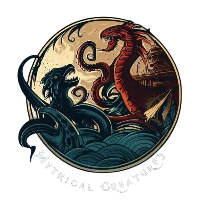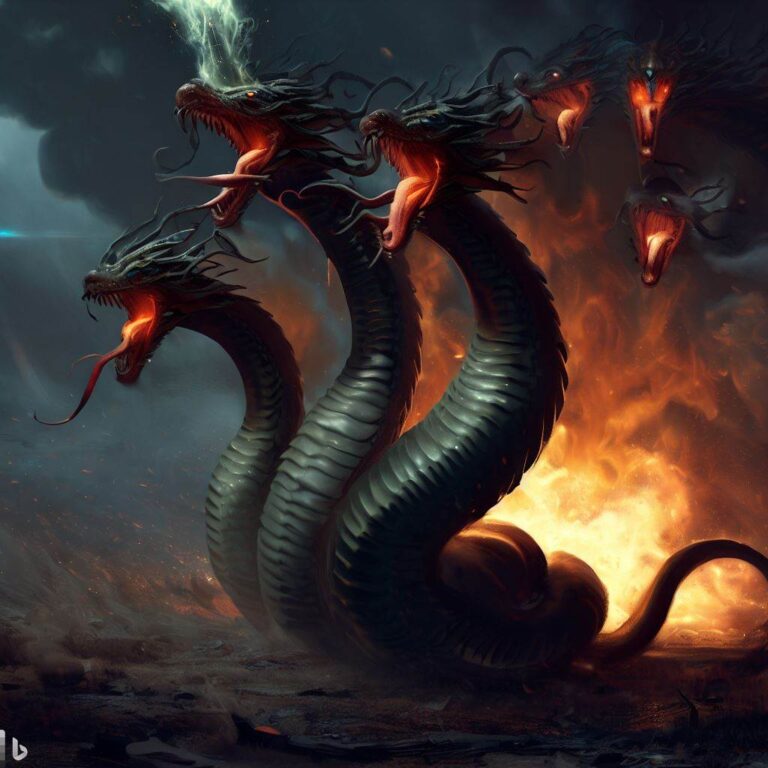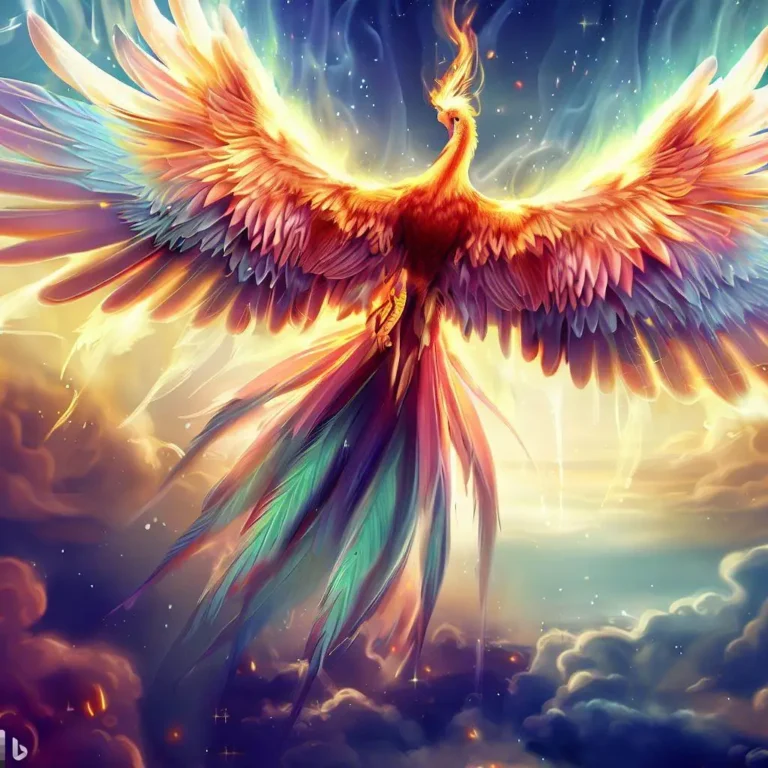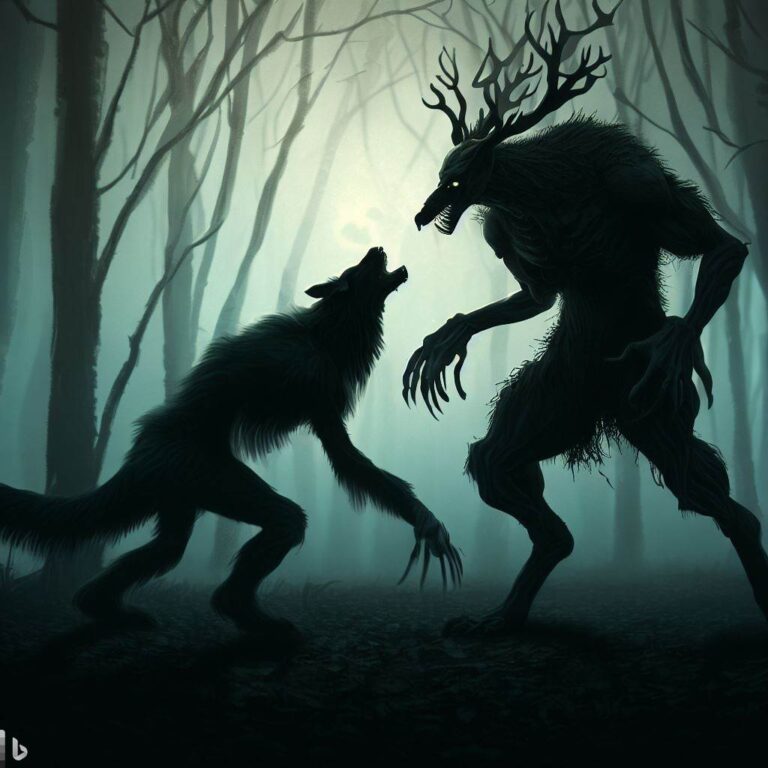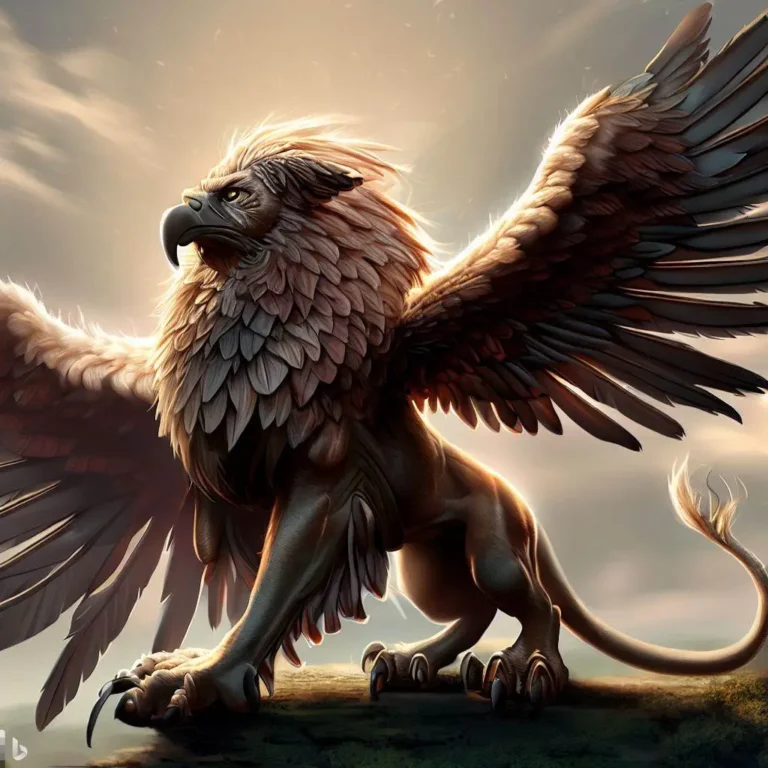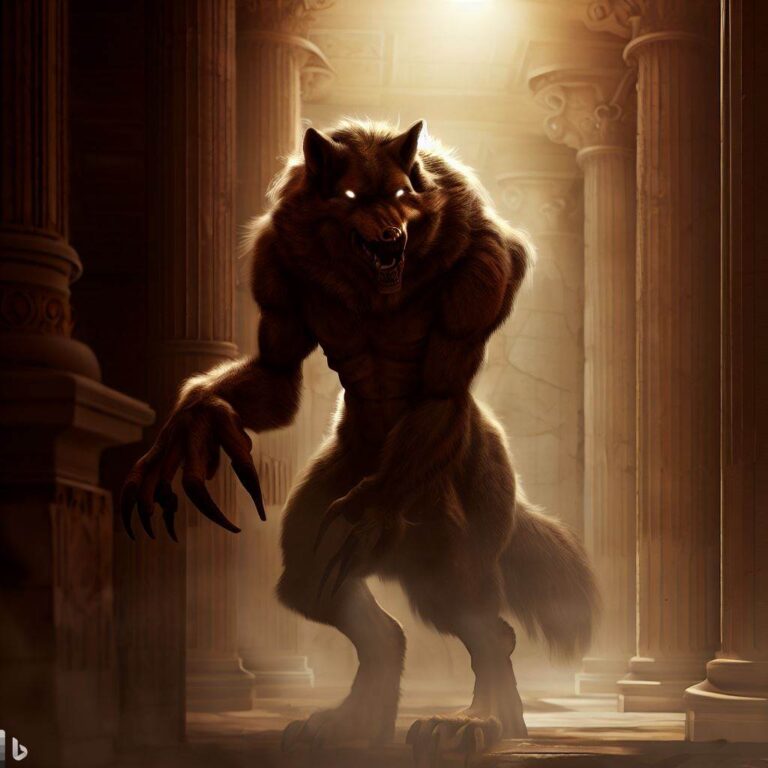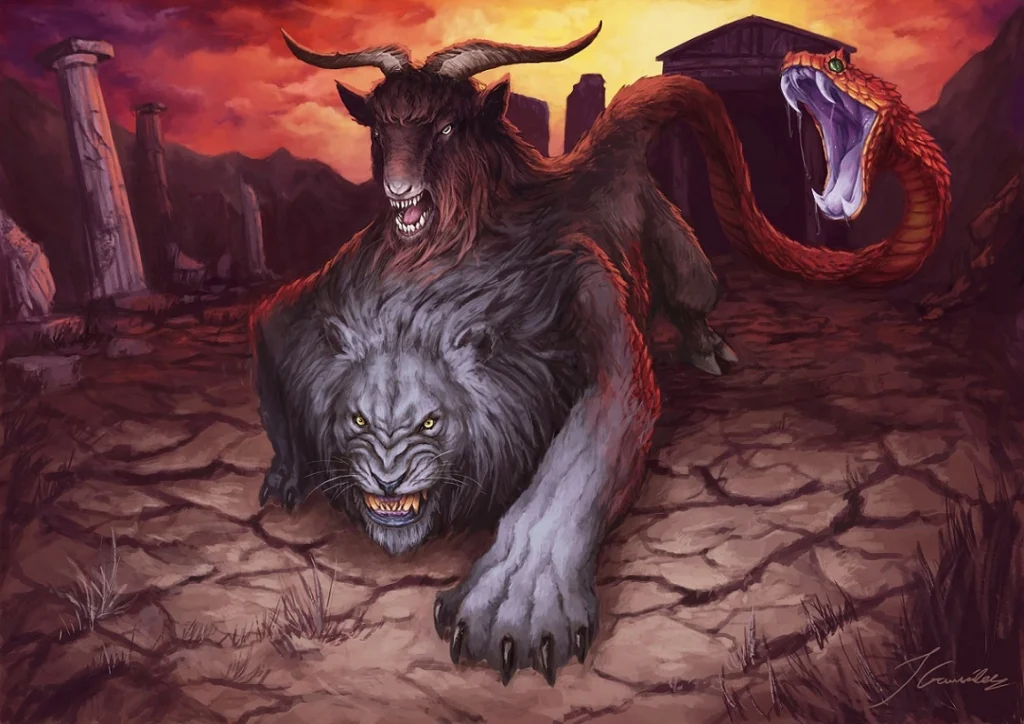
Image credits:deviantart.com
The chimera is one of the most well-known mythological creatures in history. This legendary hybrid monster has persisted as an iconic beast in stories, art, and popular culture for thousands of years.
But what exactly is a chimera? And what is the meaning and symbolism behind its fantastical, mixed-up form?
What is a Chimera?
A chimera is a mythological creature that possesses body parts from various different animals. The term chimera comes from Greek mythology.
But chimeras have appeared in the legends and folklore of many cultures worldwide.
The most common depiction of a chimera combines features of a lion, a goat, and a serpent or dragon. It has the head and body of a lion, often with wings.
The goat head and neck appear in the center of its back. And a serpent or dragon forms its tail.
This bizarre blend strikes an unsettling, alien appearance. The chimera’s mismatching features evoke both unease and fascination. They also endow the chimera with enhanced abilities.
It can attack with the lion’s claws and fangs. The goat head spits fire. And the serpent tail injects venom.
Altogether, the chimera combines the strengths of all three animals into one ferocious monster. Its composite form represents the mixing of categories and transgression of natural boundaries.
Origins and Mythology
Chimeras have their roots in ancient mythology. The legends depict these creatures as dangerous hybrids that must be overcome by heroic humans or gods.
Greek Mythology
In Greek myths, the chimera is a monstrous fire-breathing creature that ravages the countryside of Lycia. It is so dangerous that many warriors are afraid to challenge it.
Eventually, the hero Bellerophon manages to defeat the chimera with the help of the winged horse Pegasus.
This tale was popular in Greek literature and art. It highlighted Bellerophon’s bravery and emphasized the seeming impossibility of conquering a monster like the chimera.
The location in Lycia helped explain the origins of fantastical creatures in faraway, unfamiliar lands.
Mesopotamian Mythology
Chimeras also appear in ancient Mesopotamian myths. They are associated with forces of chaos, darkness, and instability in the natural world.
Their composite forms evoke mysterious unknown dangers. And their fire-breathing and poisonous abilities symbolize their destructive potential.
Killing the chimeras offered a chance for Mesopotamian kings to prove their might and establish cosmic order. The chimeras’ primal, chaotic nature had to be controlled.
Other Mythologies
References to chimeras arise in Egyptian, Indian, and Chinese mythology as well. They represent supernatural wonders and fears of the natural world.
Their far-flung appearances speak to the lasting imprint of the chimera as a metaphor for the strange and unfamiliar.
Appearance and Symbolism
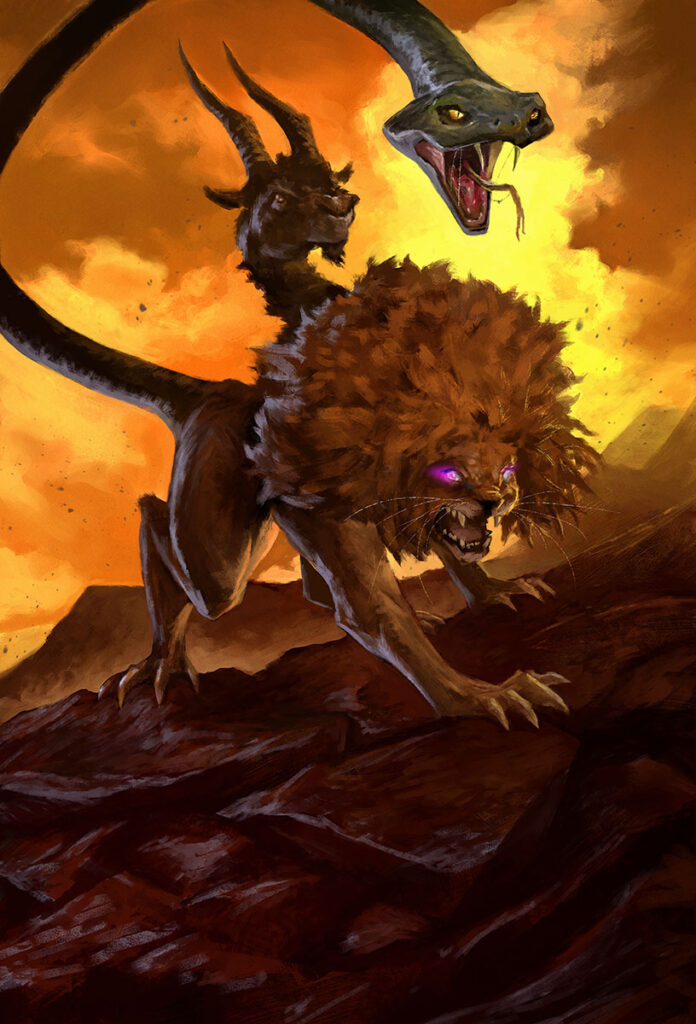
Image credits:deviantart.com
The chimera’s distinctive appearance carries a wealth of symbolic meanings.
- Hybrid animal form represents:
- Duality between real and imagined
- Mixing categories and transgression of boundaries
- The strange and unfamiliar
- Fire-breathing ability symbolizes:
- Destruction and apocalypse
- Purification and renewal
- Connection to underworld or afterlife
- Interpreted as allegory for:
- The untamable wilderness
- Greed and excess
- Sinful lust and unbridled passion
This rich web of meanings gave the image of the chimera great imaginative power in many contexts.
The Chimera in Art and Literature
The striking image of the chimera has made it a popular subject for artists and writers over the centuries.
Ancient Greek Art
In Greek artistic depictions, the chimera frequently appears locked in combat with the hero Bellerophon. Scenes of their struggle occur commonly on Greek pottery and friezes.
The focus is on elaborating the chimera’s peculiar anatomy for dramatic effect.
Medieval Bestiaries
Later on in the Middle Ages, chimeras were included in bestiaries – compendiums describing various animals and creatures.
The chimera was given moral or allegorical meaning by Christian authors. It became associated with sin, heresy, excess, and the dark pagan past.
Renaissance Art
In the 16th century Renaissance, chimera depictions experienced a resurgence. Chimeras adorned grotesques, mosaics, sculptures, and more.
Artists emphasized the chimera’s unnatural composite form for dramatic contrast. They also explored more imaginative variations beyond the standard lion, goat, and snake ingredients.
Literature and Media
In contemporary times, chimeras continue to feature in fantasy novels, movies, videogames, and other media.
Often the chimera represents reckless genetic engineering, technology gone wrong, or dangers of modifying nature. Its metaphorical blend of categories still fascinates modern audiences.
What Does Chimera Mean Today?
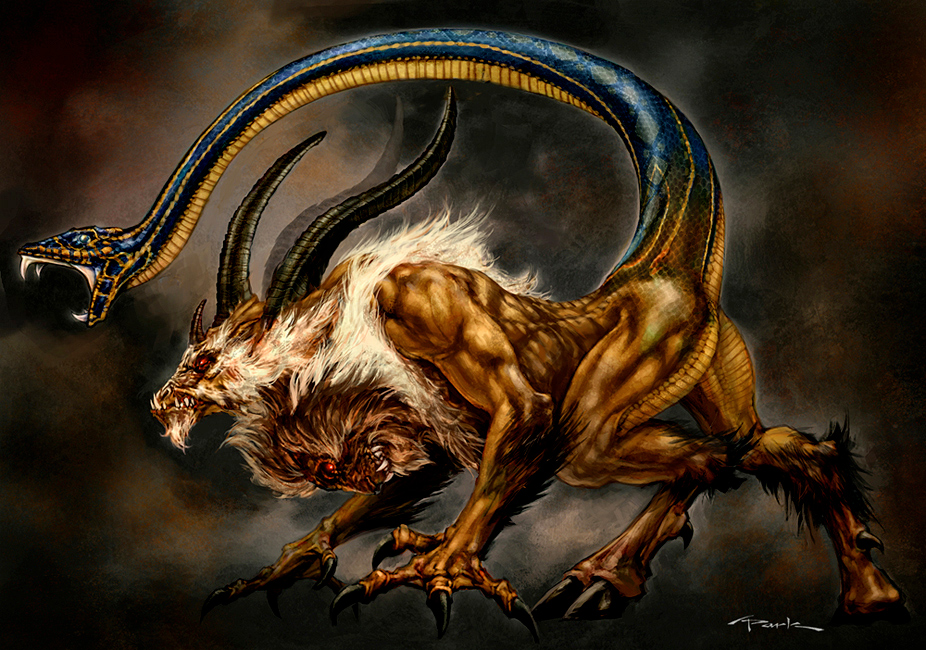
Image credits:deviantart.com
The chimera endures as a powerful symbol and metaphor. Its mingled animal features evoke deep unease mixed with awe at strange new biological possibilities.
The chimera attracts continued fascination as a marker of transgressions, whether moral, natural or imagined.
Scientifically, a chimera today refers to an organism containing genetically distinct tissues, such as from fusion of multiple embryos. So in a sense, real chimeras now exist.
The mythical symbol lives on, representing both our fears and ambitions surrounding manipulation of life.
FAQs
What is the female version of a chimera called?
- A female chimera is sometimes referred to as a chimaera with an “ae” spelling.
Are chimeras real?
- While mythical chimeras are fictional, real-life chimeras do exist in biology, such as animals that have two sets of DNA.
What is the difference between a chimera and a griffin?
- Griffins typically have the body, tail, and back legs of a lion with the head, wings, and front talons of an eagle. Chimeras have a more composite form mixing various animal parts.
How do you pronounce chimera?
- In English, chimera is pronounced “kahy-MEER-ah” or “KIE-meer-uh.” The ch is hard as in chimney.
Conclusion
In summary, the chimera is one of the most enduring mythological creatures, capturing imaginations for millennia with its unsettling composite form.
As a symbolic mix of contrasting animals, the chimera embodies humanity’s simultaneously horrified and fascinated reaction to violations of nature’s boundaries.
Its continued relevance in the modern era proves the lasting hold these ancient monster legends still have on our collective imagination.
